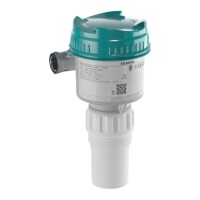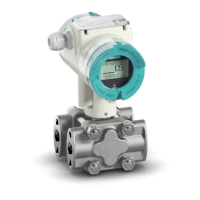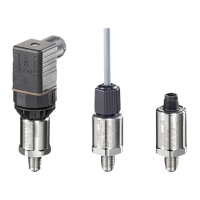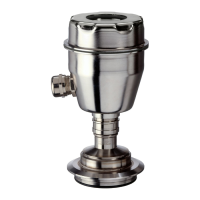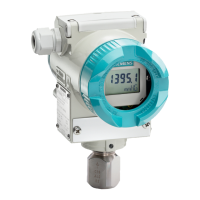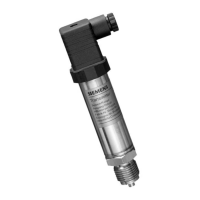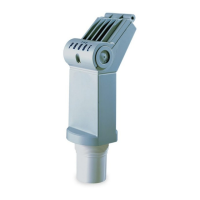
Do you have a question about the Siemens THE PROBE and is the answer not in the manual?
| Brand | Siemens |
|---|---|
| Model | THE PROBE |
| Category | Transmitter |
| Language | English |
Describes the ultrasonic level monitor combining sensor and electronics in a single package for liquid level measurement.
Details the recommended mounting area, temperature range, and proximity to electrical sources for optimal performance.
Advises on positioning the Probe for a clear sound path, avoiding obstructions like walls and fill paths.
Explains the available thread types (NPT, BSP, PF2) and the importance of matching threads.
Describes the optional 3" flange adapter for connecting to various flange standards.
Details the sanitary probe for clean-in-place applications, temperature limits, and chemical compatibility.
Provides instructions for running and connecting the cable, including lid opening and torque specifications.
Illustrates the basic connection between The Probe and loop instrumentation.
Explains the Probe's characteristics under the FM entity evaluation concept for intrinsic safety.
Clarifies the criteria for interconnecting intrinsically safe and associated apparatus, considering faults.
Lists requirements for dust-tight/water-tight conduit seals and voltage limits for FM/CSA installations.
Covers apparatus group, temperature class, ambient range, and installation practices for ATEX certification.
Illustrates the connection diagram for non-intrinsically safe applications with voltage and current specifications.
Guides through the initial power-up sequence, display indications, and default run mode.
Explains how to calibrate the mA output to be proportional or inversely proportional to material level.
Details calibrating by adjusting material level and pressing specific keys to set reference points.
Step-by-step instructions for performing the 4 mA calibration process.
Explains how to access and change settings like fail-safe, blanking, units, and speed of response.
Describes an alternative calibration method using scrolling for fine-tuning output levels.
Details adjustments for measurement response, agitator discrimination, filter, and fail-safe timer.
Explains the fail-safe defaults (full, empty, hold) that occur upon loss of echo or fault condition.
Guides on selecting measurement units between metres (m) and feet (ft).
Describes how to adjust the waiting period before fail-safe defaults are applied.
Lists probable causes for unreliable echoes and the Probe waiting for a valid echo.
Shows the relationship between mA loop current and interval in seconds.
Lists patent numbers for instrument housing design and electronics/sensor.
Details the voltage, current, and loop current specifications for the device.
Lists operating conditions like location, altitude, ambient temperature, and humidity.
Specifies the measurement range for liquids and the device's beam angle.
Covers range, span, accuracy, resolution, loading, and cable type for the output signal.
Describes the sensor housing material, mounting types, and electronics housing material.
States the enclosure rating for protection against dust and water ingress.
Lists certifications like CE, C-TICK, CSA, FM, and ATEX for intrinsic safety and hazardous locations.
